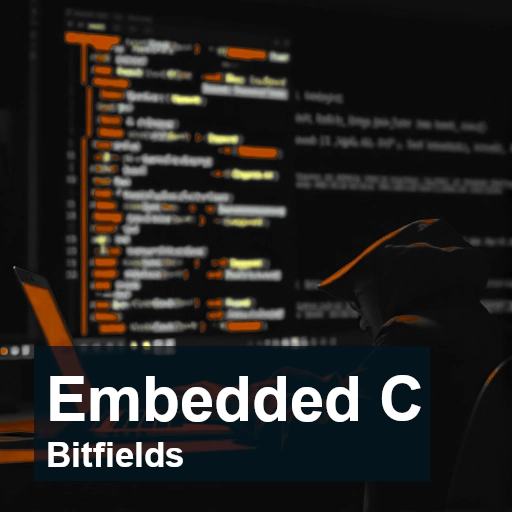In C programming, bitfields are a special kind of structure member used to manage memory more efficiently. They allow the packing of data into a smaller number of bits, which can help reduce memory usage when dealing with binary data, flags, or low-level hardware operations.
What Are Bitfields?
A bitfield is a portion of a structure that allows you to allocate a specific number of bits for each member. Instead of using the default storage type (usually an int, char, or short), you can specify exactly how many bits each member of the structure will take.
Here’s an example of a structure with bitfields:
#include <stdio.h>
struct Status {
unsigned int is_active : 1; // 1 bit for is_active
unsigned int error_code : 4; // 4 bits for error_code
unsigned int priority : 3; // 3 bits for priority
};
int main() {
struct Status s;
s.is_active = 1; // True (active)
s.error_code = 5; // Error code 5 (4-bit max value)
s.priority = 3; // Priority level 3 (3-bit max value)
printf("Active: %d\n", s.is_active);
printf("Error Code: %d\n", s.error_code);
printf("Priority: %d\n", s.priority);
return 0;
}Explanation:
- unsigned int is_active : 1;: The is_active field takes up 1 bit. It stores a boolean-like value, either 0 (false) or 1 (true).
- unsigned int error_code : 4;: The error_code field takes up 4 bits, which can represent values from 0 to 15 (since 4 bits can hold any value in the range 0-15).
- unsigned int priority : 3;: The priority field takes up 3 bits, which can represent values from 0 to 7 (since 3 bits can hold values in the range 0-7).
Key Points About Bitfields
- Size Constraints: The size of each bitfield is specified in the declaration, and the total number of bits across all fields in a structure is usually constrained by the size of the underlying integer type. For example, if unsigned int is 32 bits, a structure can hold up to 32 bits, but individual fields may use fewer bits.
- Packing and Alignment: The C standard doesn’t guarantee how bitfields are packed in memory. In some systems, bitfields may be packed tightly to use the least amount of memory, while in others, padding might be added for alignment reasons. The packing order and bitwise alignment can vary based on the compiler and architecture.
- Types for Bitfields: The data type of a bitfield can be an integer type (int, unsigned int, short, char, etc.). Most commonly, unsigned int or unsigned short is used for bitfields, as the behavior of signed integers with bitfields can be tricky, especially when bit operations are involved.
- Accessing Bitfields: Bitfields can be accessed directly like other structure members. The compiler will take care of reading and writing to the specified number of bits.
Advantages of Bitfields
- Memory Efficiency: Bitfields allow you to store data more compactly. For example, you can pack multiple boolean values (0 or 1) or small integers into a single byte or word, saving memory when you don’t need a full integer.
- Optimized Representation: In situations such as hardware programming or networking protocols, bitfields can be used to represent flags, registers, or bit-level data more naturally.
- Bitwise Operations: Bitfields provide a clear and concise way to perform bitwise operations like AND, OR, and XOR on specific bits within a structure.
Example Use Case: Bitfields in Hardware Programming
A common use case for bitfields is in hardware control registers. For example, let’s assume you need to manage a control register that consists of several flags for a device:
struct ControlRegister {
unsigned int enable : 1; // Enable device
unsigned int reset : 1; // Reset device
unsigned int mode : 2; // Mode (00, 01, 10, 11)
unsigned int interrupt : 1; // Interrupt enabled
unsigned int reserved : 3; // Reserved bits
};In this case, the structure would represent a 8-bit register, with each field serving a specific purpose. The bitfield efficiently uses only the required bits for each flag and parameter.
Conclusion
Bitfields in C are a powerful tool for managing memory more efficiently, particularly in situations where you need to store data that can be represented by a small number of bits. They are often used in system-level programming, hardware interfaces, and protocols where memory and performance are crucial. However, care must be taken with portability, alignment, and compiler-specific behavior when using bitfields in C.

